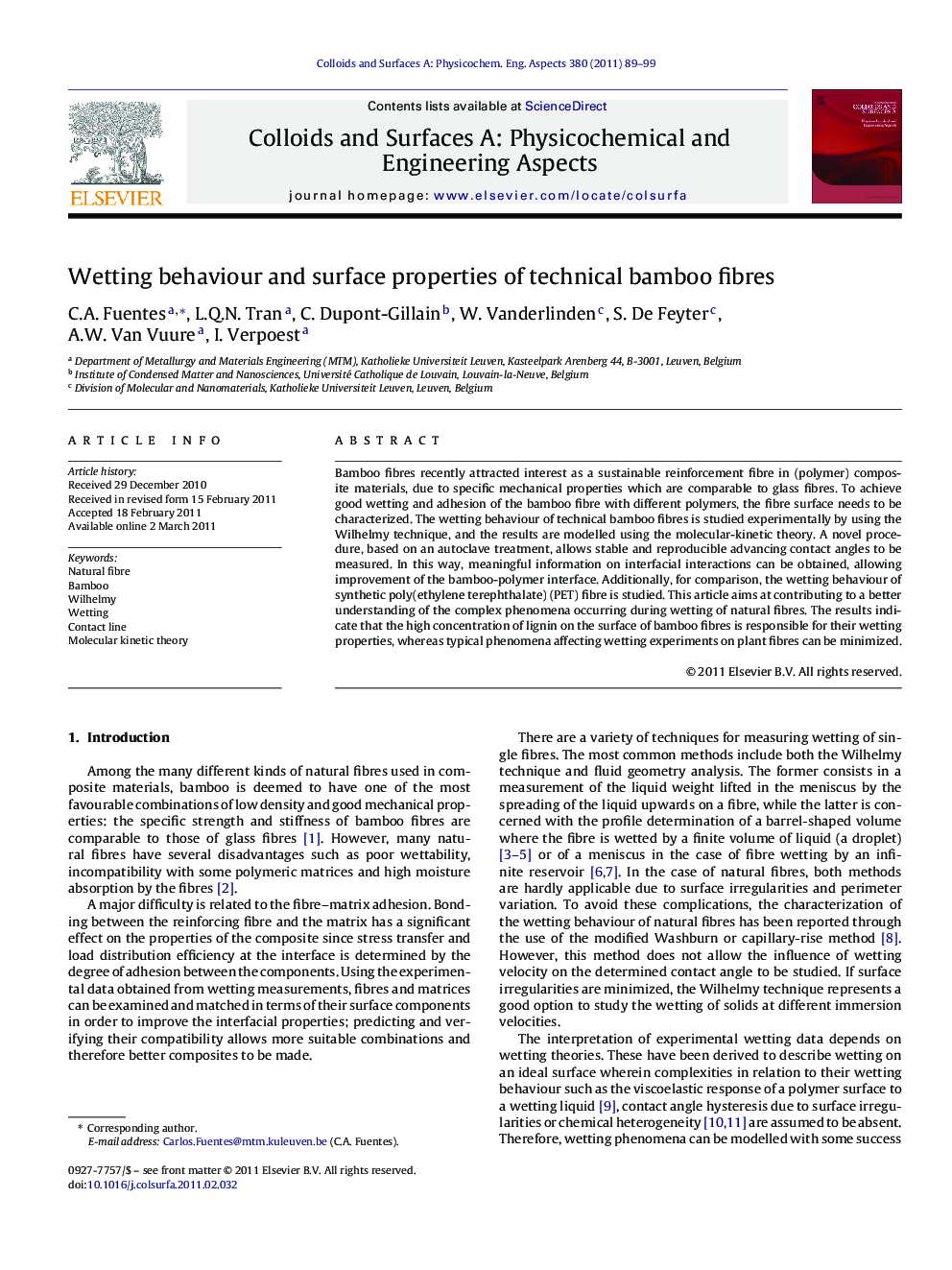| Article ID | Journal | Published Year | Pages | File Type |
|---|---|---|---|---|
| 594756 | Colloids and Surfaces A: Physicochemical and Engineering Aspects | 2011 | 11 Pages |
Bamboo fibres recently attracted interest as a sustainable reinforcement fibre in (polymer) composite materials, due to specific mechanical properties which are comparable to glass fibres. To achieve good wetting and adhesion of the bamboo fibre with different polymers, the fibre surface needs to be characterized. The wetting behaviour of technical bamboo fibres is studied experimentally by using the Wilhelmy technique, and the results are modelled using the molecular-kinetic theory. A novel procedure, based on an autoclave treatment, allows stable and reproducible advancing contact angles to be measured. In this way, meaningful information on interfacial interactions can be obtained, allowing improvement of the bamboo-polymer interface. Additionally, for comparison, the wetting behaviour of synthetic poly(ethylene terephthalate) (PET) fibre is studied. This article aims at contributing to a better understanding of the complex phenomena occurring during wetting of natural fibres. The results indicate that the high concentration of lignin on the surface of bamboo fibres is responsible for their wetting properties, whereas typical phenomena affecting wetting experiments on plant fibres can be minimized.
Graphical abstractFigure optionsDownload full-size imageDownload as PowerPoint slideHighlights► Fluctuations during wetting of bamboo fibres are related to surface irregularities. ► Irregularities are largely reduced by autoclave treatment. ► Lignin on the surface of bamboo fibres is responsible for their wetting properties. ► The wetting of bamboo fibres conforms well to the molecular-kinetic theory. ► Advancing contact angle for a water-bamboo system is stable and reproducible.
